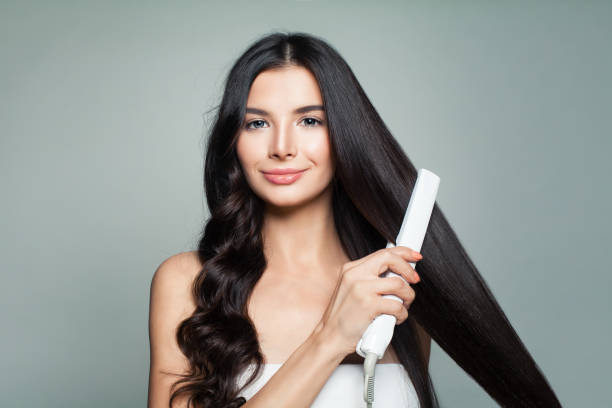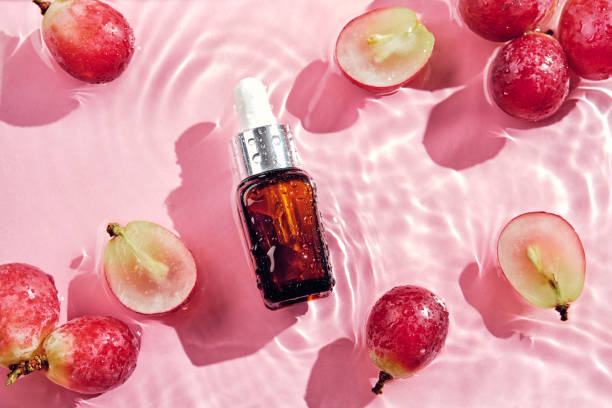If you’ve ever dreamed of having gorgeously straight and smooth hair while keeping your natural texture intact, you’re in for a treat with the silk press. It’s like a magical hair transformation that allows you to switch up your style temporarily. Whether your hair is curly, coily, or wavy, the silk press can give you that sleek, elegant look you’ve been cravin. Unlike traditional methods of straightening hair, silk pressing leaves your locks with a silky, bouncy finish that looks and feels natural.
In this article, we’ll discuss everything you need to know about silk pressing natural hair – from what it is and how to do it to its pros and cons.
What is a Silk Press?
A silk press is a hair straightening technique that uses a combination of blow-drying and flat ironing to achieve a smooth, silky finish. It is a popular technique for people with naturally curly or textured hair, as it can help to reduce frizz and create a more manageable style.
The process involves using heat to temporarily break down the protein bonds in the hair, allowing it to be molded and styled into straighter patterns. The term “silk press” comes from the silky and smooth finish that the hair gets after the process is complete.
Unlike chemical relaxers, which permanently alter the hair’s structure, silk pressing only lasts until the next time you wash your hair. Additionally, silk pressing doesn’t involve the use of harsh chemicals, making it a safer and gentler alternative for those who prefer not to use chemicals on their hair or have sensitive scalps.
how to do a silk press on natural hair at home
Materials You’ll Need
- Shampoo and conditioner
- Wide-tooth comb or detangling brush
- Heat protectant spray or serum
- Blow dryer with a nozzle attachment
- Ceramic flat iron (with adjustable temperature settings)
- Clips or hair ties
- Silk or satin scarf or bonnet
- Silk or satin pillowcase
Step 1: Start with Clean Hair
Silk pressing should always be done on freshly washed and conditioned hair. This will ensure that your hair is free from any product buildup or oils that can interfere with the straightening process. After washing, apply a heat protectant to protect your hair from heat damage.
Step 2: Detangle Your Hair
While your hair is still damp, use a wide-tooth comb or detangling brush to gently remove any knots or tangles. Begin at the tips of your hair and work your way up to the roots to avoid excessive breakage.
Step 3: Apply Heat Protectant
Apply a heat protectant spray or serum evenly throughout your hair. This will create a barrier between your hair and the heat from the flat iron, reducing the risk of damage.
Step 4: Blow Dry Your Hair
Attach a nozzle to your blow dryer for more precise air control. Using a medium to low heat setting, begin blow drying your hair in sections. Use a paddle brush to guide the heat through your hair, stretching it out as you go. Aim to get your hair as straight as possible during this step.
Step 5: Section Your Hair
Divide your hair into small, manageable sections using clips or hair ties. Smaller sections allow for more even and effective straightening.
Step 6: Straighten Your Hair
- Set your ceramic flat iron to an appropriate temperature for your hair type. Lower temperatures are suitable for fine hair, while higher temperatures are better for coarse or thick hair. Start with a lower temperature and gradually increase it if needed to avoid excessive heat damage.
- Take one of the sections you’ve created and run the flat iron down a small portion of hair, starting as close to the roots as you can without burning yourself. Use a slow, steady motion to straighten the hair. Repeat this process for each section of your hair until it’s all straightened.
Step 7: Silk Wrap Your Hair
After straightening each section, wrap it around your head in the direction you want it to fall, creating a silk wrap. Use clips or pins to secure it in place. This helps to set the hair and maintain its sleekness.
Step 8: Let Your Hair Cool
Allow your hair to cool down in the silk wrap for at least 10-15 minutes. This helps the hair’s cuticles close and maintain the straightened style.
Step 9: Style and Finish
Carefully unwrap your hair from the silk wrap and style it as desired. You can add a little oil or serum for extra shine and smoothness
Pros and Cons of a Silk Press
Like any hair styling technique, silk pressing natural hair has its pros and cons. Here are some of the most important ones:
Pros
- Give your hair a smooth, sleek finish that can last for several days.
- Help to reduce frizz and make your hair more manageable.
- Once your hair has been silk pressed, you can style it in a variety of ways, such as straight, curly, or wavy.
- Can be used on all hair types, including naturally curly or textured hair.
Cons
- Can be a time-consuming process, especially if you have thick or long hair.
- If not done correctly, a silk press can damage your hair. It is important to use a heat protectant spray and to avoid over-flat ironing your hair.
- If you get a silk press done at a salon, it can be expensive.
How long does silk press last on natural hair?
The longevity of a silk press on natural hair can vary depending on several factors, including your hair’s texture, the quality of the silk pressing technique, your hair care routine, and your environmental conditions. On average, a well-done silk press can last anywhere from 1 to 2 weeks. However, for some individuals with extremely curly or coily hair, the results might start reverting to their natural texture sooner.
To prolong the life of your silk press, it’s essential to protect your hair while sleeping with a silk or satin scarf or bonnet, avoid excessive moisture or humidity, and use lightweight hair products to minimize the risk of reversion. Regular maintenance and touch-ups can also help extend the duration of your silk press.
FAQs
- Is a silk press damaging? Silk pressing can cause heat damage if not done properly or excessively. To minimize damage, always use a heat protectant and only flat iron your hair when it’s completely dry.
- Can I silk press my hair at home? Yes, you can silk press your hair at home, but it’s important to use the right tools and techniques to avoid damaging your hair. Make sure you have a high-quality flat iron with adjustable temperature settings, a heat protectant, and a shine serum or oil to finish the look.
- Can I silk press my hair if it’s already been chemically treated? It is not recommended to silk press your hair if it has been chemically treated, as it can lead to further damage and breakage. Instead, consider other styling methods that are gentle on chemically treated hair.
- How often should I silk press my hair? The frequency of silk pressing your hair depends on your hair type, its condition, and your personal preferences. However, it’s generally recommended to wait at least 2-4 weeks between each silk pressing session to give your hair time to recover and minimize the risk of heat damage.
Final Takeaway
Silk pressing natural hair is a great way to achieve a sleek and bouncy look without the use of harsh chemicals. By following the right steps and using the right tools, you can achieve the perfect silk press that leaves your hair looking and feeling silky smooth. However, it’s important to keep in mind the potential risks and drawbacks of silk pressing and explore alternative styling methods that may work better for your hair type and condition. With the right knowledge and guidance, you can achieve any hairstyle you desire while keeping your hair healthy and beautiful.




